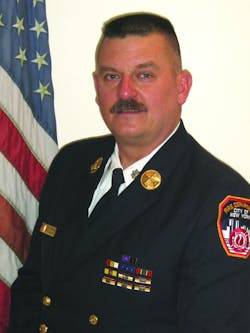The Fire Scene: Putting the Search Team Ahead of the Hoseline
We’ve all been to structure fires and we all also know that there are a lot of jobs that must be conducted to get a handle on a burning building. Of course, we need water supply, we need forcible entry and we need ventilation, attack hoselines and search and rescue. I know we need even more, but let’s go with this for now.
So what is the first interior operation we should be getting underway as soon as possible? I know some of you are thinking attack hoseline. Although in some cases that is correct, it’s not where I’m going with this column. What we need first, and there are several reasons for this, is a search team to enter the structure ahead of the attack hoseline. I know some of you are thinking you don’t have enough people on scene to do that and get a hoseline into operation, but this is a valid tactical operation. Let’s take a look at why assigning a search team ahead of the attack hoseline will make for a faster, more efficient and safer fire operation.
You pull up to a house fire with two apparatus and six firefighters. There is an obvious fire within the two-story, single-family house, but no fire is visible. Smoke is issuing from all of the first-floor windows and several second-floor windows. What next? I think you should send a team of two firefighters in immediately to search for the fire and victims. If there are no reports of trapped people, that’s great, but we still need to search for both fire and victims. While this two-person team is searching for the fire, the remaining firefighters can be pulling hose from the apparatus and getting ready to enter and fight the fire.
The benefit to sending in a search team first is that the members can maneuver more freely without pulling a hose along with them, which includes entering areas and rooms and quickly moving out of those areas and into other areas as they continue their search. If you are searching and pulling a hoseline along with you, it is going to be a slow and cumbersome search. You may enter and head to the left and stretch a full length of hose in the wrong direction. This is simply not efficient or correct. Additionally, it exposes firefighters to a rapidly extending and growing fire that may find them before they find it.
The next reason to send a search team in ahead of the attack hoseline is for life. I don’t care who you are – if you are advancing a hoseline into a house fire and you encounter an unconscious victim in a room or hallway, you will have to stop fighting the fire to save the victim. If you pass the victim to continue fighting the fire and report the victim’s location to another team, you are doing that victim a great disservice. If you find a victim, you must stop the fire attack and get that victim out immediately. Now, the fire can advance and put both you and the victim is great danger.
Imagine instead a search team that enters the front door and, after a minute or two, locates the fire in the kitchen in the rear of the house. The team radios that information to the engine team, poised at the front door with a charged line and the attack is underway. At the same time, the search team continues to search adjacent rooms and hallways for victims and extension. If victims are found, their removal is begun immediately. If no victims are found, the search team completes the search of the fire floor and moves up to the second floor. There, the team quickly penetrates to the room over the fire area and starts that search for victims and fire again. If the fire has extended, even in a small way up the walls or through the floorboards, the search team can call for a hoseline to handle the extension.
As mentioned earlier, some departments don’t arrive with large numbers of firefighters at structural fires. This is true, but the fact is that certain tactics and jobs must be undertaken at structural fires. Performing them out of sequence or understaffed is dangerous and improper. Fire tactics and procedures must be researched, established and followed.
There is generally a good reason for most established firefighting guidelines found in fire training books and magazines. Take the time to read, study and implement these tactics at your department for a more professional, efficient and safe fireground operation.
Chief Salka takes a candid look at news and events impacting the fire service in his blog “The Fire Scene” at http://www.firehouse.com/blogs/the-fire-scene.
